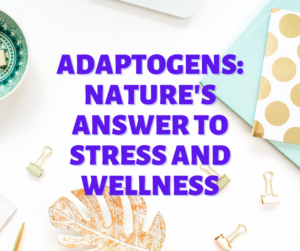We’ve all been there. That urge to reach for ice cream after a tough day or a chocolate chip cookie when things go wrong. That’s comfort eating, a deeply personal and surprisingly complex topic. While it might provide temporary relief, it can quickly spiral into unhealthy habits.
Table of Contents:
Understanding Comfort Eating
Comfort eating isn’t just physical hunger. It’s using food to cope with negative emotions, stress, boredom, or habit. It’s often triggered by upsetting situations, memories, or even anticipated stressful events.
For some, stress eating, late-night eating, and comfort eating isn’t about reward. It’s an attempt to numb emotions, comfort, and cope with anxiety, stress, depression, and overwhelm. When life throws curveballs, we sometimes use food as a coping mechanism, seeking comfort in the moment.
One way to learn about physiological factors associated with comfort eating is to read research supported by tests and procedures. Such studies often support the Mayo Clinic’s research faculty.
Why We Turn to Comfort Food
Our brains seek pleasure and avoid pain. Food, especially those rich in sugar, fat, and salt, can trigger the release of feel-good chemicals like dopamine.
This creates a powerful reward cycle. This makes certain comfort foods difficult to resist. Consider this point highlighted in the Mayo Clinic’s discussion of drugs and supplements.
Instead of processing feelings constructively, through prayer, meditation, or sharing with others, food provides immediate comfort. We temporarily forget the emotions and avoid addressing the underlying problem. Food doesn’t judge; it soothes. We experience a surge of relief.
The Downside of Comfort Eating
While comfort eating may temporarily relieve emotional distress, it has many health consequences as supported by the research of Mayo Clinic’s programs and centers.
- Weight gain.
- Nutritional deficiencies.
- Guilt and shame.
- A continuous cycle of emotional eating.
Breaking the Cycle of Comfort Eating
We all crave comfort. How can we regain control and develop a healthier relationship with food?
If emotional extremes related to external triggers drive you to food, it helps to identify, acknowledge, and deal with the core problem.
Constructively address these issues through therapy, family discussions, or support programs. Whether the issue is big or small, find healthy coping skills rather than turning to emotional overeating. Don’t replace temporary comfort with greater future suffering.
Mindful Eating Practices
Patient-centered care can help address overeating by forming a treatment plan to break free from the cycle of emotional eating. The information shared within the Mayo Clinic website regarding patient centered care explains further.
- Pay attention to your hunger physical cues: Are you truly hungry, or are you eating due to boredom, stress, or another emotion?.
- Savor your meals: Engage all your senses when you eat. Slow down and be mindful of triggers driving the cravings. Engage in being present while eating a meal. Honor every meal by eating with intention.
- Create a calming eating environment: Turn off screens, sit at a table, and focus on the meal.
Managing Emotions without Food
For more on managing emotions, Mayo Clinic provides details on their website that may enhance other important aspects of well-being as well such as keeping in balance the areas around managing good mental health. Addressing the underlying emotional eating reasons for poor physical health due to over eating, weight gain, etc can greatly impact someone’s emotional state too.
- Identify your triggers: What situations, emotions, or thoughts lead you to comfort food? Look through past medical journals or patient records for potential clues about emotional eating habits. An experience during clinical trials, coupled with insights from other patient records and a unique psychological evaluation, can uncover emotional triggers, eating behaviors and possibly emotional eating types associated with your personal situation.
- Develop healthy coping mechanisms: Engage in activities you enjoy. Consider these alternatives that could serve as rewards when feeling stressed or trigger emotional eating:
- Exercising.
- Spending time in nature.
- Connecting with others.
- Yoga or simply being active.
- Journaling your feelings about food cravings. Reflect on why food provides a crutch and why unhealthy eating habits arise from emotional triggers, feelings, extremes or situations. Seek help with departments and centers covering relevant areas to address health concerns that result from this eating pattern, whether physical or mental. Emotional eating is tied directly to mental and physical well being.
- Practice stress-reducing techniques: Mindfulness meditation, deep breathing exercises, and yoga can help calm your mind and reduce urges. The Mayo Clinic’s centers and programs conduct research around these topics and might have relevant clinical trials or post-doc opportunities available.
Seek Professional Support When Needed
Sometimes, comfort eating can signal a deeper issue, especially as information reveals on the Mayo Clinic website within the diseases and conditions area.
Realize that you are not alone. Mayo Clinic has multiple support avenues such as research support for diseases and conditions to help give understanding of diagnosis details or how to find more information about treatments or research from the site’s research faculty area. Financial burdens don’t have to stop anyone from getting support from available options they can provide; connect with them.
- Therapists and counselors can help identify the root cause of emotional eating. This enables you to break free from unhealthy cycles and food cravings. Researching specific labs, departments, programs, and centers within Mayo Clinic can offer additional avenues to explore. This knowledge and connection to clinical expertise can provide needed ideas for breaking destructive patterns such as emotional eating and weight loss issues.
- Support groups offer community and connection. Find kindred spirits who are also working to overcome similar challenges through Mayo Connect Support Groups. Here, one may meet others and begin to develop eating habits that are better, where eating food and making healthy snacks is more fulfilling where food isn’t replacing missing fulfillment from positive emotions and or positive social experiences and thus doesn’t serve to fill those holes instead in unhealthy ways as it once did where extreme highs from exciting events to major lows from any loss type where comfort eating once ruled to ease the stress or pressure from high-level emotions.
Conclusion
Comfort eating is a common struggle, but it doesn’t have to control your life. By understanding the underlying causes, developing healthy coping mechanisms, and seeking support, you can break free. Cultivate a positive and balanced relationship with food.


